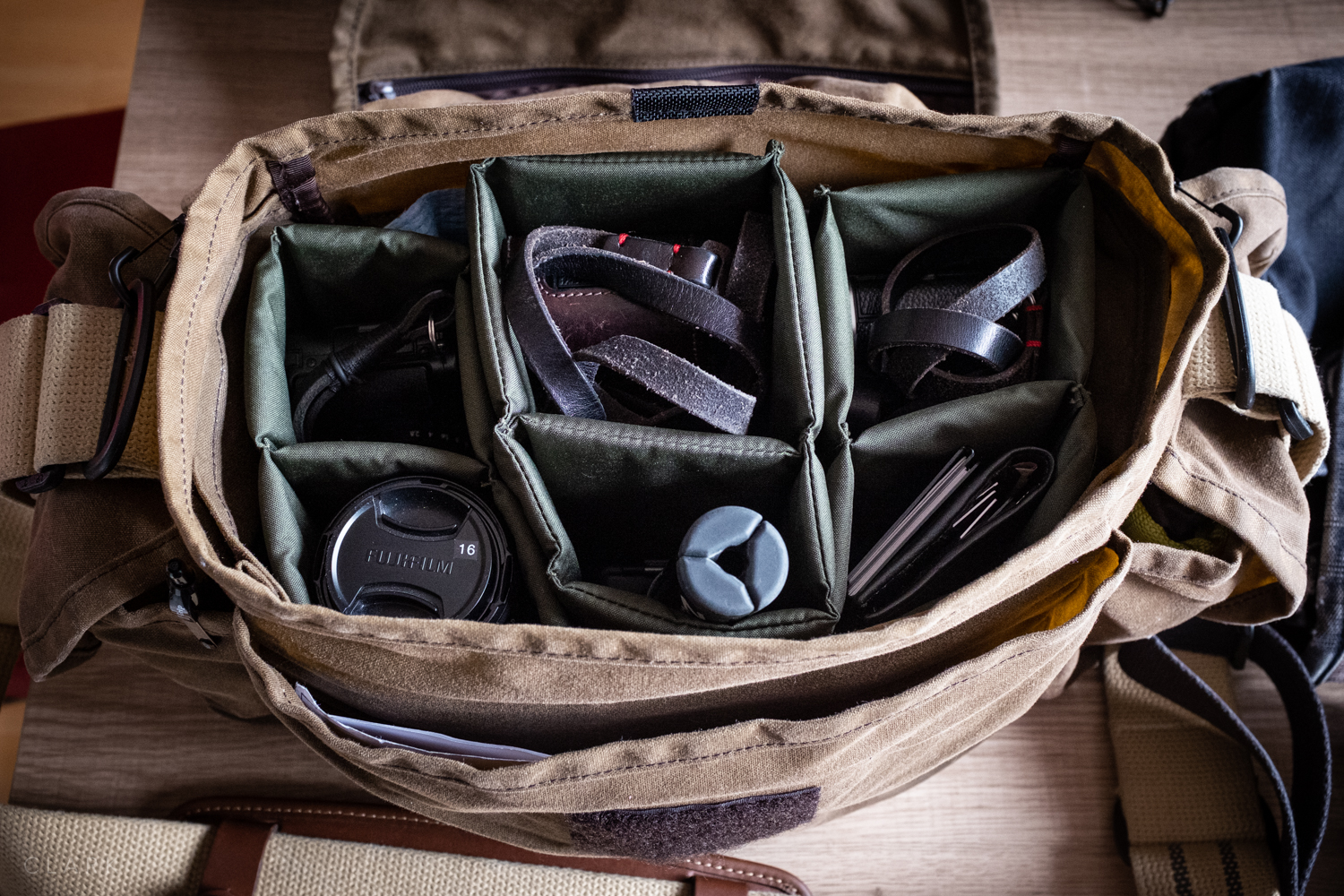Apologies for yet another Domke blog post, but I thought this would be interesting to those of you debating on buying a regular canvas bag or a Ruggedwear waxed canvas version. You don’t have to search too far on the internet on the subject of Domke to come across the great wax debate. In one corner you have the rugged wear users that swear the wax gets everywhere and all over bodies and lenses. In the other corner, you have the users that say this is just not true and that their bag had zero wax transferring to their hands. Well, I’m here to tell you that they are both wrong…I mean both right…eh.
I have owned a Domke F-3x Ruggedwear bag for about a year and a half, and now, having just bought a Military Green F-803 Ruggedwear version, I have found both sides to be correct.
My Domke F-3x Brown Ruggedwear when it was new (left) and as it is now, dirtier but less waxy!
THE DOMKE F-3x BROWN RUGGEDWEAR
You can read my Domke Or An Ass post about the F-3x Ruggedwear and how I thought it might be a fake at first because the material was rather thin. But I just want to focus on the wax here. When the F-3x arrived from Amazon UK it didn’t look as though it had a lot of wax on it, definitely not compared to some I had seen on Google Images. But it was waxy to the touch, and being the type of person that hates having sticky or greasy hands, I wanted to get rid of the wax as much as possible.
I know some people will ask why I would buy the Ruggedwear version if I didn’t want the wax, but I like the rougher look and the softer material. I have a black canvas F2 for my music photography bag, which is great, but it takes a long time to break in and soften up.
So I put the F-3x out in the sun and then wiped the excess wax off when it melted. I even used a hair dryer at one point. Some people recommend putting the bag in a dryer with a towel, but I don’t have a dryer. But now my F-3x is much less waxy and I enjoy using it. Domke doesn’t recommend machine washing Ruggedwear bags, but that’s probably just to make sure the bag stays waterproof.
My newly acquired Domke F-803 Military Green Ruggedwear and the well-worn black canvas version
THE DOMKE F-803 MILITARY GREEN RUGGEDWEAR
Although I have an old and worn black canvas F-803 that is really soft and comfortable to use, I have been on the lookout for a Military Green version of the F-803 of the F-3x. So when an F-803 Military Green Ruggedwear showed up on Amazon recently, I bought it straight away, even though it was in the US and I am in Scotland. I wondered if the wax would be a problem and I had decided that I might just risk it and throw it in the washing machine a few times.
But when the new F-803 arrived, I was pleasantly surprised that it didn’t feel waxy at all, even though it looks waxier than the F-3x did when it was new. I can rub my hands on the surface and there is zero wax transferring on to my skin. I can put notebooks business cards or even my Fuji x70 into the front pockets without worrying they will get wax on them. The material of the F-803 feels slightly thicker and stiffer than my F-3x, but maybe the latter was like this when new too.
The Ruggedwear version of the F-803 does have a green lining on the inside and under the top lid, which the the canvas version doesn’t have (neither does my F-3x). This makes the bag feel a bit more higher quality than the others.
The extra lining of the F-803 Ruggedwear bags is a nice touch.
It was a bit of a gamble buying this Military Green Ruggedwear version of the F-803. I could get away with putting an insert in to protect my cameras from getting wax on them, but I use the front pockets of the F-803 series a lot for notebooks, pens, business cards, batteries etc. My worsed case scenario was returning it or selling it on Ebay, but I’m really happy with this bag and I’m looking forward to putting it through loads of abuse during the next few years. It will easily carry an X-Pro2 with attached 35/2, an X100 series, and either a couple of extra lenses or my X70 (or all of that if I really had to). The two little zipped pockets on the outside of the bag are an added bonus and are good for spare memory cards and business cards. They are also a great place to keep train tickets or packing tickets as they are always quickly accessible. There is also a pocket on the back large enough for an iPad.
There is a Fujifilm version of this bag in sand-coloured Ruggedwear. If any of you own one of them maybe you could mention in the comments if they suffer from being waxy or not?







































































